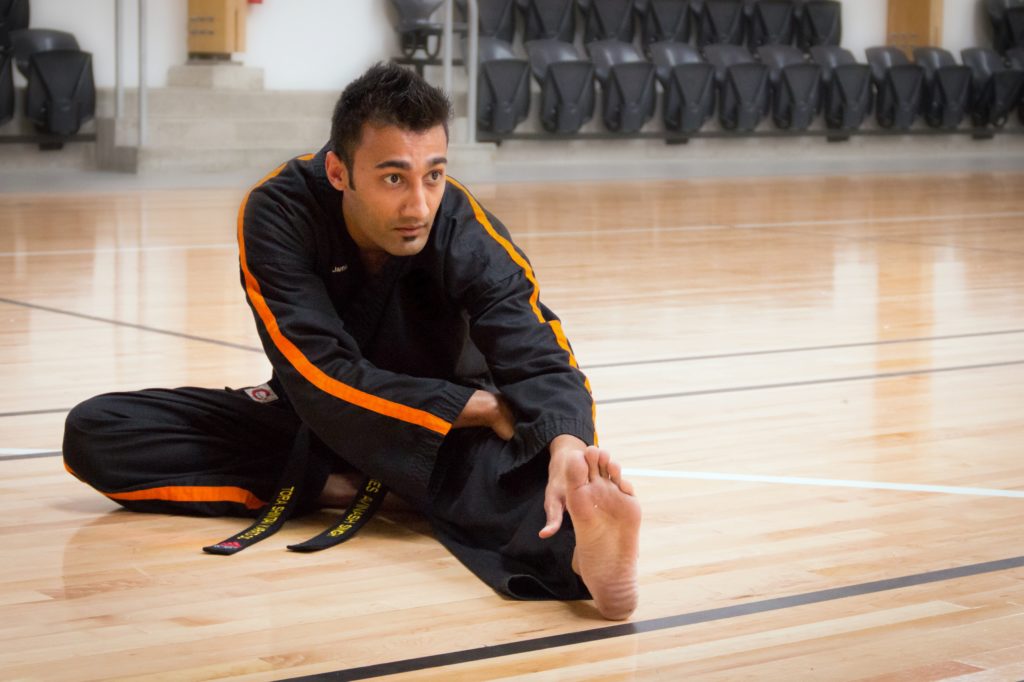Just imagine that our body is like a chain. If one link of the chain is tight then it can affect other links in the chain. Similar analogy with our body, a tight muscle in one area of the body can cause imbalances, pain or tightness in another part of the body.
Tight muscles are also a major cause of injuries during exercise. Many muscle strains, tears or major joint injuries are due to tightness.
A well balanced body and flexibility is an important aspect of our health and daily life, as it is needed for good posture and injury prevention. Get in the habit of stretching at least a few times per week.
Do I really need to stretch?
It's a good idea and I highly recommend stretching. The reasons for stretching are diverse but lets keep it simple. As we progress into our day our muscles get into contracted positions for long periods and become tense. This can lead to postural problems and injuries such as the common major lower back pain.
Stretching is simple and quick. Stretch regularly in order to avoid common problems. It's a good idea to stretch before, during and after a sission. Also stretch on the days you’re not training.
Karate exercises is a great way to learn new and unique stretching, or have a Personal Training session to show you some stretches.
There are two types of stretching methods:
| # | Type | Description |
|---|---|---|
| 1. | Static | Stretching a muscle to the full extent of your ability and holding it for 15 to 60 seconds. |
| 2. | Dynamic | Dynamic stretching requires the use of continuous movement patterns that mimic the exercise or sport to be performed. |
1.Static Stretching
When you think of stretching, it is usually this type of stretching that immediately comes to mind. Static stretching exercises are those stretches that you are told to hold for so many seconds and do so many times a day. It’s often recommended as a way to stretch before vigorous exercise. Check out some sample static stretching routine.
There are two types of static stretches:
| # | Type | Description |
|---|---|---|
| 1. | Active | Added force is applied by yourself for greater intensity. |
| 2. | Passive | Added force is applied by a partner to increase intensity. |
2.Dynamic Stretching
The short definition of dynamic stretching is "stretching as you are moving". Dynamic stretching requires the use of continuous movement patterns that mimic the exercise or sport to be performed. Generally speaking the purpose of dynamic stretching is to improve flexibility for a given sport or activity.
It also provides a good warm-up before a sport or activity like Kumite. An example of dynamic stretching would be a Karate competitor doing long, exaggerated strides to prepare his legs for kicks. Dynamic stretching exercises have been shown to improve performance when done before an activity that requires a lot of power, strength or speed.
All movements during a dynamic stretch are done deliberately and slowly so as to avoid activating the stretch reflex at the end of the movement and movements used are those that mimic those movements used in a specific sport but in a controlled yet exaggerated manner.
Should I stretch before exercise?
Not necessarily. Static stretching before exercise can weaken performance, such as speed. You should warm-up by doing dynamic stretches which are like your workout but at a much lower intensity. A good warm-up before a doing your kicks could be lunges or leg swings. Start slowly, and gradually ramp up the intensity.
Should I stretch after exercise?
YES!, this is a great time to stretch! Everyone is more flexible after exercise because you've increased the circulation to those muscles and joints. This is when you do static stretches as you will get the most benefit.
With any stretch like Static or Dynamic you should feel a stretch but you shouldn't feel pain.

Stretching should be a part of a regular program. At National All Styles Tournament.


